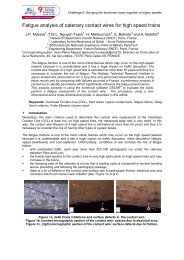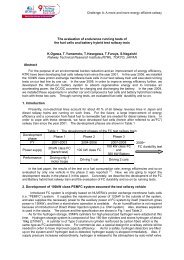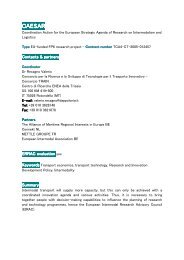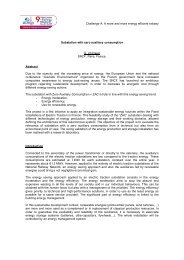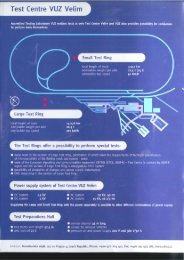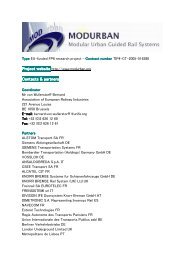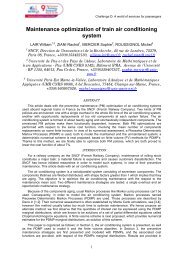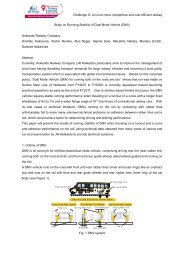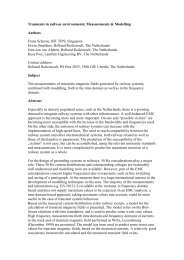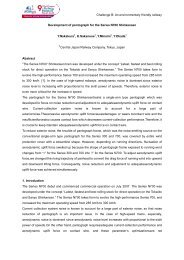Track Buckling Hazard Detection and Rail Stress Management
Track Buckling Hazard Detection and Rail Stress Management
Track Buckling Hazard Detection and Rail Stress Management
Create successful ePaper yourself
Turn your PDF publications into a flip-book with our unique Google optimized e-Paper software.
Challenge C: Increasing Freight capacity <strong>and</strong> services<br />
Figure 6 – RNT Monitoring <strong>and</strong> Readjustment during a <strong>Rail</strong> Break <strong>and</strong> Repair<br />
5.0 <strong>Track</strong> <strong>Buckling</strong> <strong>Hazard</strong> <strong>Detection</strong><br />
With the annual buckle derailments in the US ranging from 20 - 40 at a cost of over $10M per year, the<br />
prevention of track buckle caused derailments remains a key industry goal. <strong>Rail</strong>road efforts are<br />
continuing to focus on improving buckling prevention practices <strong>and</strong> on to better identifying buckling prone<br />
conditions. To assist in these efforts Salient Systems has recently developed a “<strong>Buckling</strong> <strong>Hazard</strong> Index”<br />
which provides a warning on potential buckles in terms of a yellow, orange, or red alert. The yelloworange-red<br />
alerts are based on the track having a prescribed buckling margin of safety (BMS). The BMS<br />
is determined by the <strong>Stress</strong>Net TM system <strong>and</strong> is based on the RSM measured rail <strong>and</strong> neutral<br />
temperature data coupled with the track’s buckling strength evaluations. The latter is based on the<br />
Volpe/FRA “CWR-SAFE” model [6], a part of which has been incorporated into the <strong>Stress</strong>Net TM system,<br />
referred to as BUCKLE. The BMS is a numerical temperature index on how close the track is to a “critical”<br />
condition in accordance with theoretical developments in [7, 8]. For completeness, a brief review of<br />
buckling safety concepts <strong>and</strong> BMS are provided below.<br />
5.1 <strong>Buckling</strong> Safety Concepts for BMS Applications<br />
Figure 7 shows the fundamental safety concept <strong>and</strong> criterion for buckling prevention as detailed in [9], as<br />
well as applied by the UIC in line with [10, 11].<br />
T Bmax T Bmin<br />
Temperature increase<br />
above neutral<br />
Buckle<br />
Temperature increase<br />
above neutral<br />
Step 1 Step 2<br />
Buckle<br />
o<br />
Deflection<br />
o<br />
Deflection<br />
6<br />
Temperature increase<br />
above neutral<br />
T Bmax T Bmin<br />
Step 3<br />
Buckle<br />
<strong>Buckling</strong><br />
regime<br />
Temperature increase<br />
above neutral<br />
T Bmax T Bmin<br />
Step 4<br />
Buckle<br />
<strong>Buckling</strong><br />
regime<br />
Safe temperature<br />
increase



